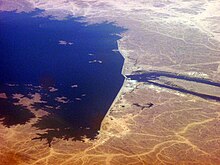Hydroelectricity is the term referring to electricity generated by hydropower; the production of electrical power through the use of the gravitational force of falling or flowing water. It is the most widely used form of renewable energy, accounting for 16 percent of global electricity generation – 3,427 terawatt-hours of electricity production in 2010,and is expected to increase about 3.1% each year for the next 25 years.
he cost of hydroelectricity is relatively low, making it a competitive source of renewable electricity.
Hydro is also a flexible source of electricity since plants can be ramped up and down very quickly to adapt to changing energy demands. However, damming interrupts the flow of rivers and can harm local ecosystems, and building large dams and reservoirs often involves displacing people and wildlife.Once a hydroelectric complex is constructed, the project produces no direct waste, and has a considerably lower output level of the greenhouse gas carbon dioxide (CO2) than fossil fuel powered energy plants.

The
Gordon Dam in
Tasmania is a large hydro facility, with an installed capacity of
430 MW.
Generating methods
Conventional (dams)
Pumped-storage
Run-of-the-river
Tide
Underground
Conventional (dams) :
Most hydroelectric power comes from the potential energy of dammed water driving a water turbine and generator.
The power extracted from the water depends on the volume and on the
difference in height between the source and the water's outflow. This
height difference is called the head. The amount of potential energy in water is proportional to the head. A large pipe (the "penstock") delivers water to the turbine.
Pumped-storage :
This method produces electricity to supply high peak demands by moving water between reservoirs
at different elevations. At times of low electrical demand, excess
generation capacity is used to pump water into the higher reservoir.
When there is higher demand, water is released back into the lower
reservoir through a turbine. Pumped-storage schemes currently provide
the most commercially important means of large-scale grid energy storage and improve the daily capacity factor of the generation system. Pumped storage is not an energy source, and appears as a negative number in listings.
Run-of-the-river:
Run-of-the-river hydroelectric stations are those with small or no
reservoir capacity, so that the water coming from upstream must be used
for generation at that moment, or must be allowed to bypass the dam. In
the United States, run of the river hydropower could potentially provide
60,000 MW (about 13.7% of total use in 2011 if continuously available)
Tide:
A tidal power
plant makes use of the daily rise and fall of ocean water due to tides;
such sources are highly predictable, and if conditions permit
construction of reservoirs, can also be dispatchable to generate power during high demand periods. Less common types of hydro schemes use water's kinetic energy or undammed sources such as undershot waterwheels.
Tidal power is viable in a relatively small number of locations around
the world. In Great Britain, there are eight sites that could be
developed, which have the potential to generate 20% of the electricity
used in 2012 .
Underground:
An underground power station
makes use of a large natural height difference between two waterways,
such as a waterfall or mountain lake. An underground tunnel is
constructed to take water from the high reservoir to the generating hall
built in an underground cavern near the lowest point of the water
tunnel and a horizontal tailrace taking water away to the lower outlet
waterway.
Advantages:
1 . Flexibility:Hydro is a flexible source of electricity since plants can be ramped up
and down very quickly to adapt to changing energy demands.
2 . Low power costs:The major advantage of hydroelectricity is elimination of the cost of
fuel. The cost of operating a hydroelectric plant is nearly immune to
increases in the cost of fossil fuels such as oil, natural gas or coal, and no imports are needed.
3 . Reduced CO2 emissions: Since hydroelectric dams do not burn fossil fuels, they are claimed to not directly produce carbon dioxide.
While some carbon dioxide is produced during manufacture and
construction of the project, this is a tiny fraction of the operating
emissions of equivalent fossil-fuel electricity generation.
Disadvantages:
1. Ecosystem damage and loss of land:
Hydroelectric power stations that use
dams would submerge large areas of land due to the requirement of a
reservoir.
:Large reservoirs required for the operation of hydroelectric power
stations result in submersion of extensive areas upstream of the dams,
destroying biologically rich and productive lowland and riverine valley
forests, marshland and grasslands. The loss of land is often exacerbated
by
habitat fragmentation of surrounding areas caused by the reservoir
2. Methane emissions (from reservoirs):
Lower positive impacts are found in the tropical regions, as it has been
noted that the reservoirs of power plants in tropical regions produce
substantial amounts of methane. This is due to plant material in flooded areas decaying in an anaerobic environment, and forming methane, a greenhouse gas
3. Failure risks:Because large conventional dammed-hydro facilities hold back large
volumes of water, a failure due to poor construction, natural disasters
or sabotage can be catastrophic to downriver settlements and
infrastructure. Dam failures have been some of the largest man-made
disasters in history.




No comments:
Post a Comment